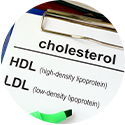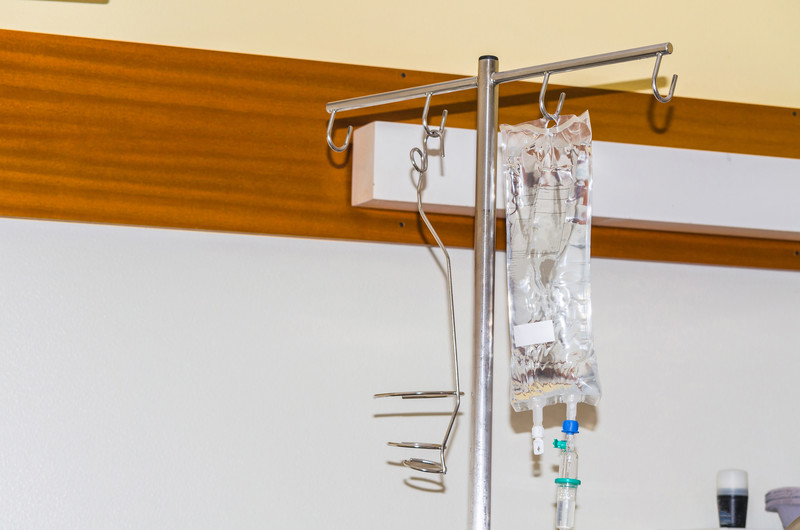At the Magaziner Center for Wellness, we are one of the leading centers specializing in EDTA chelation for cardiovascular problems. Chelation therapy is the subject of ongoing clinical research trials.
What is Chelation?
Chelation involves the intravenous infusion of vitamins, magnesium and a chelating agent known as EDTA (specifically disodium EDTA). This IV infusion “chelates,” or captures toxic heavy metals floating in the blood and the calcium and free radicals that can bind to the blood vessel walls. These harmful compounds are then excreted in the urine.
The goal of the treatment is to make the blood vessels more pliable, improve blood circulation, and reduce or eliminate chest pain and other symptoms of cardiovascular disease. Patients who have completed a course of chelation therapy often notice an improvement in their energy and well-being, and are often able to reduce or eliminate their need for medication.
Why explore Chelation?
Doctors at the Columbia University Division of Cardiology, at Mount Sinai Medical Center in Miami Beach, provide an introduction to chelation therapy in their paper published in the journal: Trends in Cardiovascular Medicine.(1)
“Medical practitioners have treated atherosclerotic disease (the buildup of plaque in arteries) with chelation therapy for some 60 years. Lack of strong evidence led conventional practitioners to abandon its use in the 1960s and 1970s. This relegated chelation therapy to complementary and alternative medicine practitioners, who reported good anecdotal results.
Concurrently, the epidemiologic evidence (evidence that Chelation Therapy can control cardiovascular disease) linking xenobiotic (synthetic, toxic) metals with cardiovascular disease and mortality gradually accumulated, suggesting a plausible role for chelation therapy. On the basis of the continued use of chelation therapy without an evidence base, the National Institutes of Health released a Request for Applications for a definitive trial of chelation therapy. The Trial to Assess Chelation Therapy (TACT) was formulated.”
What are the TACT and TACT2 Chelation clinical trials?
Dr. Magaziner was selected as an investigator to participate in the NIH-approved Trial to Assess Chelation Therapy (TACT) and the second Trial to Assess Chelation Therapy (TACT2).
To explain this program, we have provided summarized information from the Questions and Answers: The NIH Trials of EDTA Chelation Therapy for Coronary Heart Disease page at the National Center for Complementary and Integrative Health (NCCIH). Part of the the United States National Institutes of Health (NIH).
TACT
TACT was the first large-scale, multicenter study designed to determine the safety and efficacy of EDTA chelation therapy for individuals with prior heart attacks.
The goal of the study was to determine the safety and efficacy of EDTA chelation therapy for treating coronary heart disease. TACT was designed to see whether EDTA chelation therapy and/or high-dose vitamin/mineral supplements are safe and effective in treating individuals with prior heart attacks. Specifically, they sought to determine if EDTA chelation and/or high-dose vitamin supplements improved event-free survival (length of time without a cardiovascular event, such as a heart attack) in participants who were also treated with the gold standard approach (traditional coronary heart disease care) for their cardiovascular disease.
What were the key results of the study?
TACT provides evidence that a regimen of 40 infusions of disodium EDTA modestly reduced the risk of some cardiac events in adults who had previously had a heart attack. This treatment effect lasted over the 5-year follow-up period.
Overall, those receiving chelation had an 18% reduced risk of subsequent cardiac events such as heart attack, stroke, hospitalization for angina, or coronary revascularization. A cardiac event occurred in 222 (26%) of the chelation group and 261 (30%) of the placebo group.
These results are not, by themselves, sufficient to support the routine use of chelation as post-heart attack therapy.
The researchers compared the results for people who did or did not have diabetes. People with diabetes made up 37% of the total group. The researchers found that:
Among patients with diabetes, those receiving chelation had a lower risk of cardiovascular events such as heart attack, stroke, hospitalization for angina, or coronary revascularization.
Events occurred in 25% of the patients with diabetes who received EDTA chelation and in 38% of those who received placebo. Death from any cause was 43% lower in those patients with diabetes who received chelation.
Among patients who did not have diabetes, chelation therapy was not associated with a reduction in cardiovascular events. These results are not, by themselves, sufficient to support the routine use of chelation as post-heart attack therapy in people with diabetes.
“Because of the generic nature of this intervention, there is absolutely no pharmaceutical company interest in this therapy, so all of us await NIH initiatives”
In the conclusion of the research paper cited above (1) the investigators lead by Gervasio A. Lamas, MD commented on these results:
“At present, the unique nature of these findings demands follow-up research to replicate findings and understand mechanisms. . . Because of the generic nature of this intervention, there is absolutely no pharmaceutical company interest in this therapy, so all of us await NIH initiatives. Still, the magnitude of benefit was such that it suggests urgency in replication and implementation, which should, due the excellent safety record, occur simultaneously.”
TACT 2
TACT2 is a current and ongoing clinical trial. It repeats the first TACT study but is limited to patients with diabetes and a prior heart attack history. The goal of the study is to determine if the apparent benefit of EDTA chelation therapy published in the first TACT study, in this select group of patients, can be confirmed.
The three specific aims of the study are to:
Determine whether the chelation-based treatment improves cardiovascular event-free survival in this group of patients.
Determine whether the treatment reduces mortality in this group of patients
Perform a cost-effectiveness analysis of the TACT2 chelation strategy.
The results will help the Food and Drug Administration (FDA) determine whether disodium EDTA chelation therapy should be approved to reduce the risk of further cardiovascular events in patients who have both coronary artery disease and diabetes and cardiovascular and diabetes guideline committees will add this to a list of known effective therapies for treatment of cardiovascular disease in patients with diabetes.
TACT 2 Is Looking For Participants:
The Magaziner Center For Wellness is a study site
You must be: 50 years of age or older, have had a heart attack, have diabetes, and meet other eligibility criteria.
The chelation therapy used in the TACT2 study consists of up to 40 treatments through a vein in your arm (infusion) of a solution of disodium ethylene diamine tetra-acetic acid (Na2EDTA or disodium EDTA), vitamins, and other dissolved materials. Disodium EDTA is thought to bind toxic metals in the body, including lead and cadmium, that may contribute to the development of heart disease.
Although the U.S. Food and Drug Administration (FDA) has not approved disodium EDTA chelation therapy as an effective treatment for heart disease, chelation therapy has been practiced in the community for many years. The drug used in this study, disodium EDTA, is not the same drug approved by the FDA for use in cases of lead poisoning. The present clinical practice of chelation therapy also involves the use of high-dose antioxidant vitamins, minerals, and nutritional supplements taken by mouth.
If you would like to explore your candidacy for this study, please contact our office.
References
1 Peguero JG, Arenas I, Lamas GA. Chelation therapy and cardiovascular disease: connecting scientific silos to benefit cardiac patients.Trends Cardiovasc Med. 2014 Aug;24(6):232-40. doi: 10.1016/j.tcm.2014.06.002. Epub 2014 Jun 12.
2 Peguero JG, Arenas I, Lamas GA. Chelation therapy and cardiovascular disease: connecting scientific silos to benefit cardiac patients. Trends Cardiovasc Med. 2014 Aug;24(6):232-40. doi: 10.1016/j.tcm.2014.06.002. Epub 2014 Jun 12. PMID: 25106084; PMCID: PMC4152775.





































Recent Comments